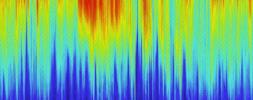The SNMREC Preferred Partner Program is an opportunity for our industry partners to collaborate more fully with the Center. This program is designed to dedicate SNMREC experts and resources to individual industry partner development needs.
Publication TR-11-174
Reference: Senat, J., and M. Arockiasamy, 2011: Simulation and prediction of loads in marine current turbine full-scale rotor blades. Proceedings of the ASME 2011 30th International Conference on Ocean, Offshore, and Arctic Engineering, June 19-24, 2011, Rotterdam, The Netherlands. OMAE2011-49752.
Abstract: The paper presents an analysis for predicting the torque, thrust, and bending moments at the root of rotor blades in a horizontal axis marine current turbine using the blade element-momentum theory combined with linear wave theory. The measured current velocities taken near the core of the Florida Current offshore Fort Lauderdale, Florida are used in the evaluation of the loads on the rotor blades. The periodic loading on the blade due to the steady spatial variation of current speeds over the rotor swept area is determined by a limited number of parameters, including tip-speed ratio, Reynolds number, lift and drag coefficients, thrust and torque coefficients, and power coefficient. In the simulation modeling, numerical calculations are carried out for every time step on the assumption of quasi-steady flow. Lift and drag coefficients are calculated as function of incident angles taking into account the 3D effects. The results from this study include simulated thrust and torque when rotor operates in calm water and waves. The variation in the thrust and torque is predicted for certain parameters including wave height and wave frequency. The thrust and torque are evaluated by varying both the rotor's rotational speed and current speed. It has been found both thrust and torque increase as the current speed increases, and in longer waves the torque is relatively sensitive to the variation of wave height. Both in-plane and out-of-plane bending moments fluctuate significantly and can be predicted by linear wave theory with blade element-momentum theory.



